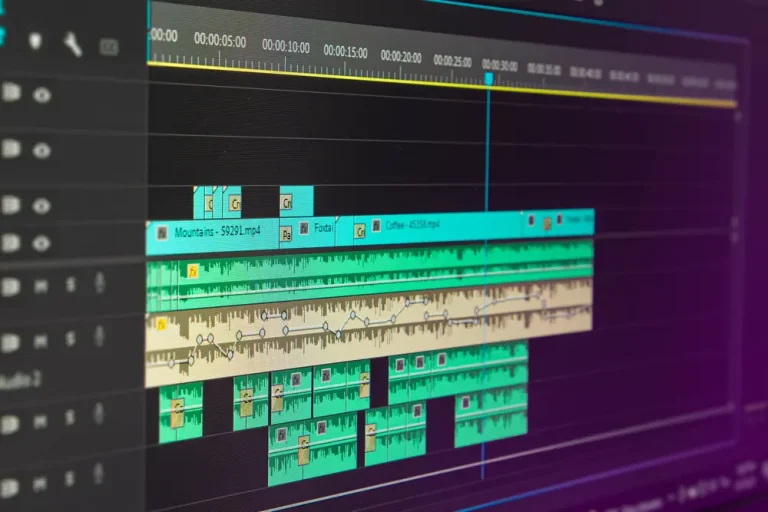Should I use a reference track when mixing my songs?
When it comes to mixing your songs, you might wonder if using a reference track is really necessary. The answer is yes; it’s quite important! By incorporating a professionally produced and mixed song as a reference, you’ll not only improve the overall quality of your mix but also gain valuable insight into your own mixing abilities.
Reference tracks serve as a guide, helping you navigate through the challenging process of mixing by allowing you to compare specific elements with a professionally mixed piece. This way, you can easily pinpoint any tonality or balance issues in your own creation. It’s a technique that can save you a considerable amount of time and frustration, so don’t underestimate its value.
Key Takeaways
- Using a reference track is essential for achieving a professional-sounding mix.
- Reference tracks serve as a guide, enabling you to easily spot and correct issues in your own mix.
- By incorporating this method, you’ll enhance your mixing skills and save time during the process.
What Are Reference Tracks?
Having a guide to follow when mixing your songs can make all the difference. That’s where reference tracks come into play. Imagine trying to make your song shine but not knowing exactly how to polish it to perfection. Don’t fret – reference tracks are here to pave the way. So, what exactly are reference tracks?
A reference track is simply a professionally mixed and mastered song that you use as a benchmark when mixing your own tunes. Picture this: you’re working on your mix, and you want it to sound as good as other tracks in the same genre. By comparing your mix to a reference track, you can achieve the right balance, depth, and overall sound quality that you’re aiming for 1.
The idea is to find a track that shares similar sonic qualities with your song, providing a standard to aspire to. By listening to reference tracks and comparing them to your mix, you can pinpoint specific aspects that need improvement, such as kick drum punchiness, reverb level, or vocal treatment 2.
Why should you use reference tracks when mixing your songs? Well, it’s all about keeping your mix focused and consistent. Great-sounding reference tracks help you create professional-quality music, guiding your decisions from start to finish and ensuring each element in your production achieves an optimal sound 3.
Here’s the process for using a reference track effectively:
- Choose a commercially successful song in the same genre as your track.
- Import the reference track into your digital audio workstation (DAW).
- Compare the dynamics of your mix to the reference track.
- Measure the volume of both tracks using a loudness analyzer, expressed in loudness units (LU) 4.
- Compare your mix with the reference track and make adjustments as needed.
Remember, the goal is not to clone the reference track but to learn from it and adapt its best qualities to your unique sound. Keep the reference as just that – a reference – and let it guide you to create your own masterpiece.
Footnotes
Why Use A Reference Track When Mixing
Learning From the Best
When you’re aiming to create a high-quality mix, it’s essential to learn from the best in the industry. Reference tracks allow you to observe and analyze popular songs that are well-mixed and mastered. This provides you with an opportunity to understand industry standards and adopt the techniques used by top engineers in your own mixes. By examining the arrangement, balance, and overall sound of successful tracks, you’re able to improve your mixing skills and create a polished final product.
Maintaining Consistency
Consistency is crucial when mixing your songs. It’s important that your tracks have a cohesive sound and feel, especially if they’re part of an album or playlist. Reference tracks help you maintain consistency by providing a sonic benchmark that you can match your mix’s tonality and dynamic range. This ensures that your songs flow together seamlessly, preventing any jarring differences in audio quality or production style. By keeping a consistent sound across your tracks, you create a more enjoyable listening experience for your audience.
Achieving a Professional Sound
It’s no secret that achieving professional sound is the ultimate goal for any audio engineer or music producer. Using reference tracks can help you reach that level of quality in your mixes. By comparing your mix to well-established songs in your genre, you can identify any areas where your track may be lacking or even exceeding the qualities of your reference. This allows you to make necessary adjustments and fine-tune your mix to ensure it meets industry standards.
Not only does this process help you create a more polished sound, but it also helps you become a more dependable music producer in the eyes of your clients and fans. When your mixes sound professional and competitive, your credibility as a skilled audio engineer grows, making it more likely that others will want to work with you or listen to your music.
Reference tracks are a valuable tool in the world of music production. They enable you to learn from industry leaders, maintain consistency across your tracks, and ultimately achieve a professional sound. By incorporating reference tracks into your mixing process, you can feel confident that you’re creating mixes that stand up to the competition and resonate with your listeners.
Selecting Appropriate Reference Tracks
When mixing your songs, choosing the right reference tracks can make all the difference. It’s important to select tracks that’ll help you achieve the sound you’re aiming for. In this section, we’ll delve into three key sub-categories to consider when selecting appropriate reference tracks: Genre Selection, Instrumentation, and Similarity in Production.
Genre Selection
Picking reference tracks within the same genre as your mix is crucial since it helps match the overall vibe and characteristics of the genre. You wouldn’t want to compare a rap track to a metal reference, would you? When browsing through reference tracks, consider the following genres to stick close to your mix:
- Rap
- Metal
- Electronic
- Pop
- Rock
Identifying the genre of your music and choosing reference tracks accordingly will make your mixing process smoother and more efficient.
Instrumentation
Another important factor to consider when selecting reference tracks is the instrumentation. It’s crucial to choose reference tracks with similar instruments and arrangements as your mix, since it helps you compare and fine-tune individual elements. For instance, if your track has a prominent guitar, you’ll want to choose reference tracks that also feature guitars. Consider the following aspects of instrumentation:
- Drums
- Guitars
- Bass
- Vocals
- Synthesizers or other electronic elements
By selecting reference tracks that closely match your mix’s instrumentation, you’ll be able to evaluate and balance your mix more accurately.
Similarity in Production
Finally, it’s helpful to choose reference tracks that have similarities in production aspects. This includes elements like:
- Mixing styles
- Compression
- EQ
- Reverb
- Stereo imaging
Paying attention to these production aspects will help you get closer to achieving the professional sound you’re aiming for. An example of a useful comparison table could look like this:
| Instrument | Your Mix | Reference Track 1 | Reference Track 2 |
|---|---|---|---|
| Drums | Tight | Punchy | Snappy |
| Guitars | Warm | Bright | Crunchy |
| Bass | Deep | Boomy | Smooth |
| Vocals | Clear | Airy | Warm |
| Synthesizers | Wide | Spacy | Sharp |
By analyzing and comparing the production aspects of your reference tracks and your mix, you’ll gain valuable insights that’ll ultimately help you shape your mix to perfection. Remember, selecting appropriate reference tracks is all about setting a clear standard for your mix, and these sub-categories will guide you in making the best choices.
Analyzing a Reference Track
Volume and Levels
When mixing your songs, it’s crucial to pay attention to the volume and levels of different elements in your reference track. Analyzing how the bass, snare, and vocals are balanced in a professional mix can help you achieve a similar sound in your own mix. For instance, consider how loud the bass is in relation to the vocals and other instruments. Are the high frequencies balanced with the lows?
Comparing your mix decisions to those in a reference track can give you valuable insight and help you avoid common pitfalls in mixing. But remember, every mix is different, so use these comparisons as a starting point, not a strict rulebook.
Frequency Balance
When comparing your mix with a reference track, you’ll want to examine the frequency balance or how different EQ ranges blend together. To do this effectively, consider the following points:
- Is there a consistent level across the frequency spectrum?
- Are the vocals clear and distinct, or are they competing with other elements in the mix?
- How bright or dark is the overall sound?
By having a clear understanding of the frequency balance in a reference track, you can make informed decisions to create a similar professional sound in your own mix.
Dynamics and Compression
Once you’ve analyzed the volume and frequency balance, it’s time to focus on the dynamics and compression of your reference track. A dynamic mix is one that has a clear, dynamic range, with various elements panned and compressed to help create depth and separation. In this stage of analysis, you’ll be looking for:
- The amount of compression applied to different elements of the mix, such as vocals, drums, and bass
- How different elements are panned to create a sense of space and direction
- What types of metering tools, like loudness and peak meters, are used to maintain a consistent dynamic range
Take a moment to listen to how different parts of the reference track evolve, and consider how you can apply these techniques to your own mix. For example, is the snare highly compressed, or does it have a lot of dynamic range? Paying attention to these details can help you create a mix with more dimension and depth.
By carefully analyzing a reference track, you’ll learn how different elements come together to create a cohesive, polished sound. Use this knowledge to make more informed decisions as you mix your songs, and you’re sure to see improvement in your final mixes. Just remember to remain adaptive and continue to learn from both your successes and mistakes along the way.
Applying Reference Tracks to Your Mix
Level Matching
You realize the importance of using a reference track when mixing your songs, but how do you make the most out of it? The first step is level matching. Your aim is to match the volume of the reference track with your mix as closely as possible. Why is this important? Because you want to compare your mix to the reference track based on sound quality and not volume differences. If the volume levels are matched, you can fairly assess the dynamics, stereo image, and overall feel of the mix.
You can adjust the gain of your reference track in your DAW to match it with your mix’s level. Remember, it’s not about being loud but about achieving a comparable sound to that professionally mastered track.
Active Listening
The next step after level matching is to actively listen to both your mix and the reference track. This means closely examining the most crucial aspects of your mix, like the kick, the bass, the vocals, and more. Listen to how each element sits in the reference track and try to emulate that in your mix.
Active listening requires switching between your mix and the reference track frequently. You’ll start to hear the differences in sound quality and production. Use this as a guide to refine your mix, focusing on achieving similar tonal qualities and stereo imaging.
Adjusting Your Mix Parameters
Once you’ve compared your mix with the reference track through level matching and active listening, it’s time to make adjustments to your mix. This is where the real magic happens. You’ll be analyzing and tweaking the parameters of your mix to achieve a professional sound that closely resembles the mastered reference track.
Maybe you notice the drums in your mix are too upfront, and adjusting the dynamics brings them to a perfect balance. Or perhaps your mix lacks stereo width, so you widen the stereo image for a more immersive experience.
By using reference tracks, you give yourself a clear target to aim for. You can make informed decisions on where your mix needs improvement and what it’s missing. So the next time you’re mixing a song, use a reference track to help elevate your production to a professional level. Enjoy the process—it’s a rewarding experience.
Common Reference Track Mistakes
When using reference tracks in your mix, there are a few common mistakes that you should be aware of to avoid falling into traps.
Over-Relying on Reference Tracks
It’s essential to find a balance between using reference tracks for guidance and relying too heavily on them. Over-relying on reference tracks can hinder growth as a mixer and potentially damage the uniqueness of your song. Reference tracks should be a tool, not a crutch. Remember that each song is different, and therefore, the mixing decisions you make should vary. Don’t be afraid to step away from the reference track, and trust your ears when making decisions.
Ignoring Your Own Creativity
Another pitfall is ignoring your own creativity when using reference tracks. While reference tracks can provide valuable insights and guidelines, don’t let them dictate your entire mix. Keep your creative juices flowing and try new mixing techniques or effects that may not be present in the reference track. The goal is not to create a carbon copy of the reference but to use it as a starting point while still injecting your own artistic touch.
Not Accounting for Mixing Environment
Lastly, it is important to account for your mixing environment when using reference tracks. The sound you hear from your studio monitors may differ from that of the reference track’s mixing environment. The listening environment, speakers, and acoustic treatment can all impact the sound you hear. To account for these differences, make sure to:
- Check your mix on various playback systems (headphones, car speakers, etc.)
- Adjust the reference track’s volume to match your mix
- Utilize tools like tonal balance plugins to compare your mix’s frequency response to the reference track
Here’s a table of potential issues and solutions when dealing with your mixing environment:
| Potential Issue | Solution |
|---|---|
| Different speaker types | A/B your mix on various speaker systems |
| Inconsistent listening environment | Create a consistent studio environment |
| Differing room acoustics | Invest in room treatment or acoustics simulation plugins |
By keeping these mistakes in mind and staying vigilant in the mixing process, you’ll be able to effectively use reference tracks while maintaining your creative vision throughout your song’s development. With practice, you’ll gain the experience and confidence to make your mix stand out in the best way possible.
Conclusion
So, you’ve realized the importance of using reference tracks when mixing your songs. It’s a game-changer, right? Now you can create professional-sounding mixes while keeping your focus on what truly matters—the music.
Think of that moment when you’re feeling lost and unsure about your mix. Remember how using a reference track can help you regain perspective and make better decisions? That’s the power you now have in your hands!
Stay confident in your mixing abilities, and remember, practice makes perfect. With reference tracks by your side, your mixes are bound to make some heads turn. So go on, make some noise, and keep creating amazing music!
FAQ: Common Questions About Using a Reference Track
Using a reference track can be a game-changer in your mixing process, but it can also raise some questions. Here are some frequently asked questions about using a reference track:
Can I use any reference track?
It’s important to select a reference track that’s similar in style, tempo, and genre to your own music. Choosing a reference track that’s too different can lead to inaccurate mixing decisions. However, feel free to experiment with different reference tracks to see what works best for you and your music.
How often should I use a reference track?
This is a matter of personal preference, but using a reference track throughout the mixing process can be helpful in achieving a balanced mix. Some artists choose to use a reference track at the beginning of the mixing process to set levels and EQ, while others use it consistently throughout the entire process.
Should I use the same reference track for all my songs?
It’s advisable to use different reference tracks for different songs, as each track may have different mixing requirements. Using the same reference track for all your songs may not result in the best mix for each individual track.
Can I use a reference track for mastering?
Yes, using a reference track in mastering can help you achieve a consistent sound across different tracks on an album or EP. However, keep in mind that mastering requires a different approach than mixing, so it’s important to use a reference track in the appropriate context.
Is it necessary to use a reference track if I have good monitors?
Good monitors can certainly help in achieving a balanced mix, but using a reference track can provide an additional perspective on your mix. A reference track can also assist with identifying potential issues in your mix that may not be apparent on good monitors alone.
Do I need to use a reference track if I’m just starting out in music production?
Using a reference track can be especially helpful for beginners in music production, as it can assist with developing listening skills and understanding what a balanced mix should sound like. Consider starting with a simple reference track and gradually incorporating more complex tracks as your skills improve.







